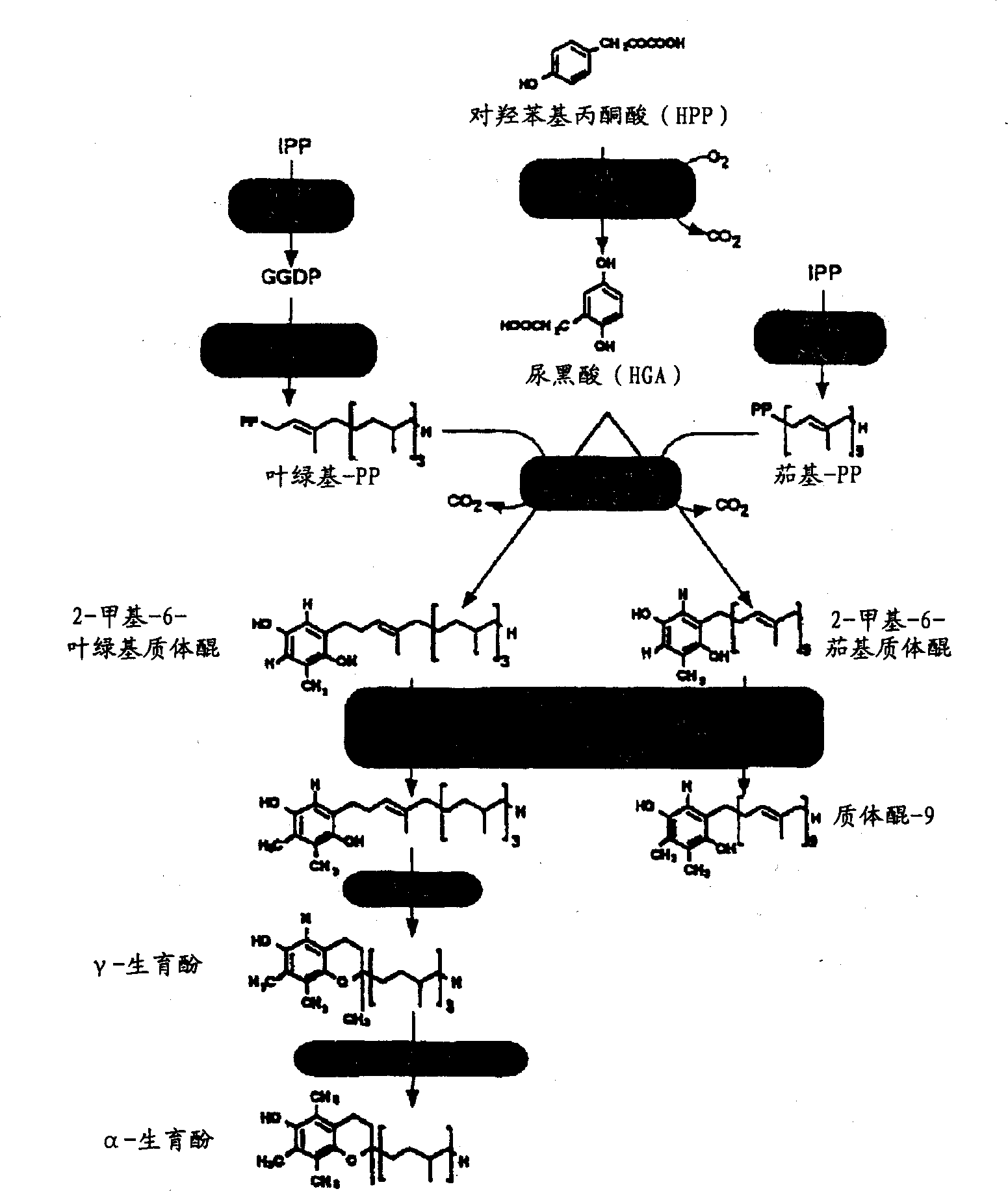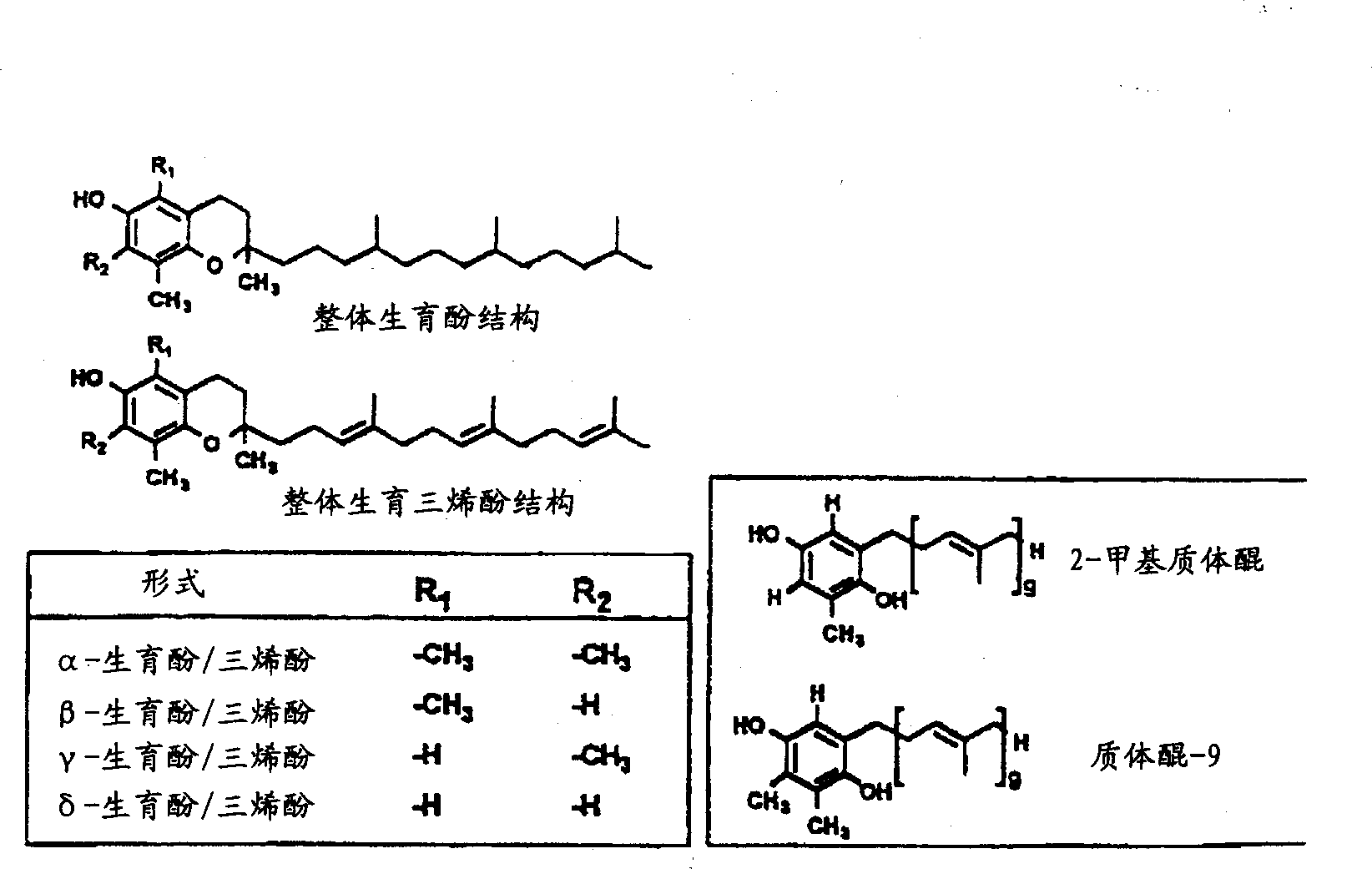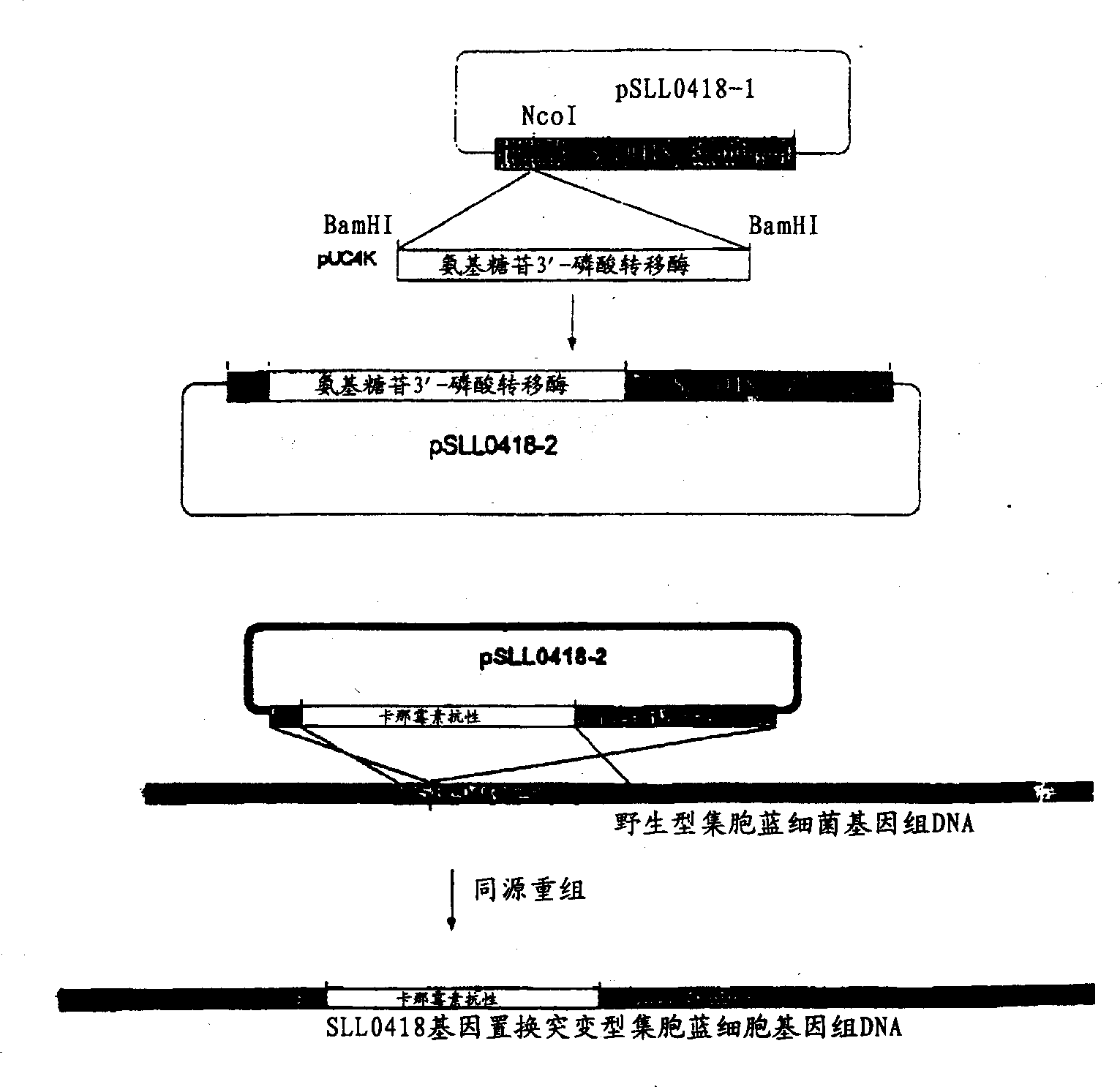Manipulation of tocopherol levels in transgenic plants
A technology for transgenic plants and tocopherols, applied in the field of changing the composition of plant tocopherols, heterologous gene constructs, and transgenic plants, can solve the problems of expensive supplements, unwillingness to take vitamin supplements regularly, etc.
- Summary
- Abstract
- Description
- Claims
- Application Information
AI Technical Summary
Problems solved by technology
Method used
Image
Examples
Embodiment
[0049] Arabidopsis and Synechocystis as complementary model systems for studying and manipulating tocopherol biosynthesis in plants
[0050] Complementary molecular genetic approaches were implemented in parallel in Arabidopsis thaliana and Synechocystis strain PCC6803 to isolate and characterize the Synechocystis 2-methyl-6-chloroplastoquinone / 2-methyl- 6-solanoid plastomaquinone-9 methyltransferase. These two model organisms were chosen because both synthesize tocopherol through the same pathway, and both are easily controlled genes, molecules, and bioactive systems. Many reactions and pathways are similar in the two organisms, most relevant to this patent is the similarity in the synthesis of tocopherol. The ease of gene function in Synechocystis to be tested by genetic disruption, combined with the recently reported complete Synechocystis genome sequence (27), makes Synechocystis an excellent candidate for isolating tocopherol (synthetic) pathway enzymes. model system an...
PUM
 Login to View More
Login to View More Abstract
Description
Claims
Application Information
 Login to View More
Login to View More - R&D
- Intellectual Property
- Life Sciences
- Materials
- Tech Scout
- Unparalleled Data Quality
- Higher Quality Content
- 60% Fewer Hallucinations
Browse by: Latest US Patents, China's latest patents, Technical Efficacy Thesaurus, Application Domain, Technology Topic, Popular Technical Reports.
© 2025 PatSnap. All rights reserved.Legal|Privacy policy|Modern Slavery Act Transparency Statement|Sitemap|About US| Contact US: help@patsnap.com



